Most of us are familiar with guide dogs for people who are blind. Companion dogs for children with autism and other learning disabilities are also becoming increasingly common. But aside from the wonderful work done by these highly trained service dogs, there is another trend that is bringing animals and children together.
Initiated by charities such as Dogs Trust and Festina Lente, more and more schools are now inviting animals – dogs and ponies in particular– into classrooms and school gardens to interact with pupils. To find out how the children respond to these initiatives, The Irish Times went along to two schools when the animals visited.
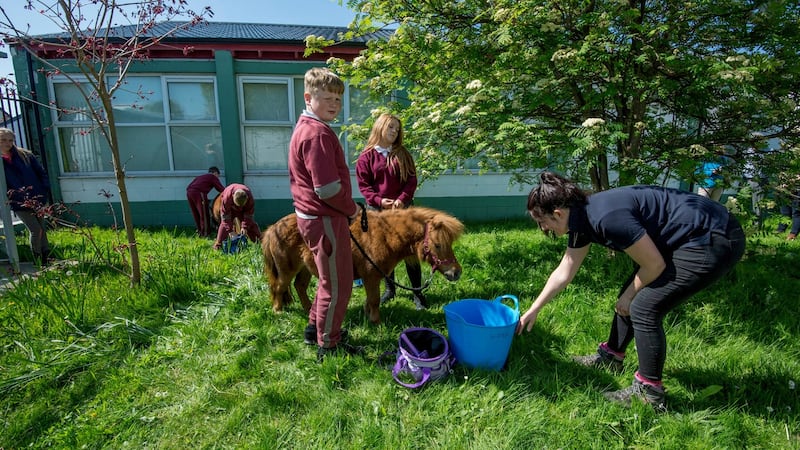
Audrey Gough from Dogs Trust is walking her King Charles dog, Lucy, in the gardens of St Francis Xavier Senior School in Blanchardstown, Dublin, when I arrive. Gough has already been into the junior classes and is giving Lucy a break before going in to meet the fourth-class pupils. As I join her, the children are going back into class and many of them want to pat Lucy on their way by. But, Gough points out that you can't just pet a dog without asking permission of the owner first.
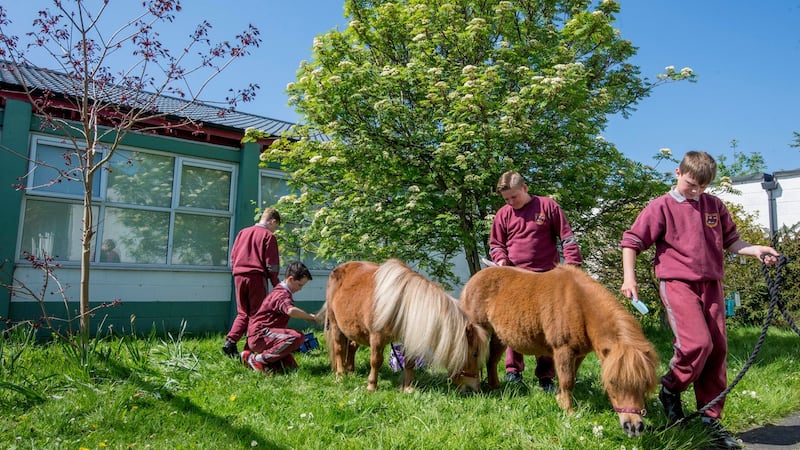
Experiential learning
Even during these brief encounters, the children are engaging with an experiential learning approach that will probably have a more lasting impact on them than an academic approach to learning about animals.
“Our aim is to educate children to be responsible dog owners and to help them understand that a dog isn’t a commodity. It has to be minded,” explains Gough.
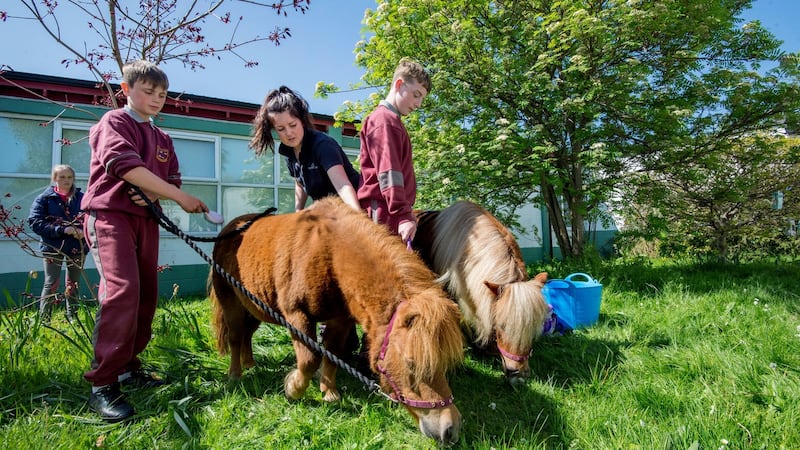
Once in the classroom, Gough talks to the children about what they should do if a dog runs up to them in the park and they are afraid. “Ignore it. Stand still and don’t look at the dog,” she explains. Gough says it’s a good idea to criss-cross your arms across your chest and look up at the sky and start walking away to show the dog you’re not interested.
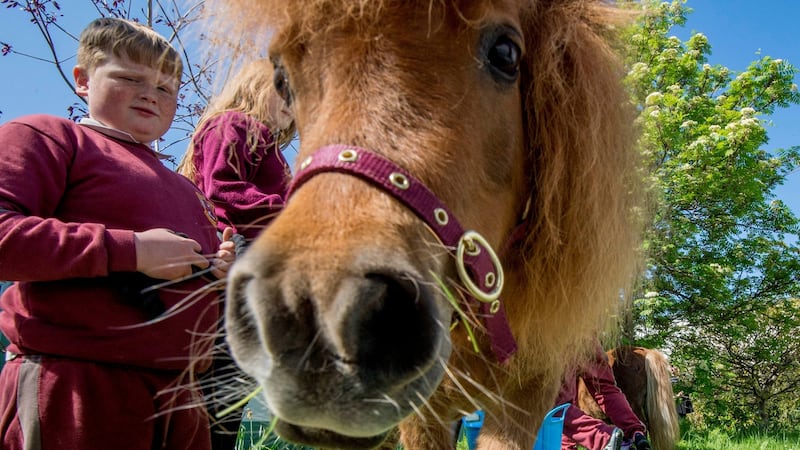
Gough talks about the work of Dogs Trust, looking after abandoned dogs before finding new homes for them. The children are all attentive and keen to share what knowledge they have of dogs while Gough tells Lucy to sit on her mat, giving her a bowl of water to keep her quiet. Now and again, Lucy barks and Gough tells her to sit quietly. The children sit and watch, subtly learning these basic skills in looking after a dog.
"It's not good to give dogs kisses and cuddles. Also when dogs are eating or sleeping or left outside a shop on a lead, it's best to leave them alone," explains Gough. At the end of the 40-minute class, the teacher, Fiona Hyland, invites two children to come and pet Lucy. "You put your hand in the shape of a fist so the dog can smell you first before you pet a dog," says Gough. As a dog owner myself, I hadn't ever heard this before.
Responsible pet ownership
The Dublin Society for the Prevention of Cruelty to Animals (DSPCA) also visits schools to encourage responsible pet ownership and respect for animals. However, they no longer bring dogs into the classroom. "It became all about the dog rather than learning about respect for animals," explains Gillian Bird from the DSPCA.
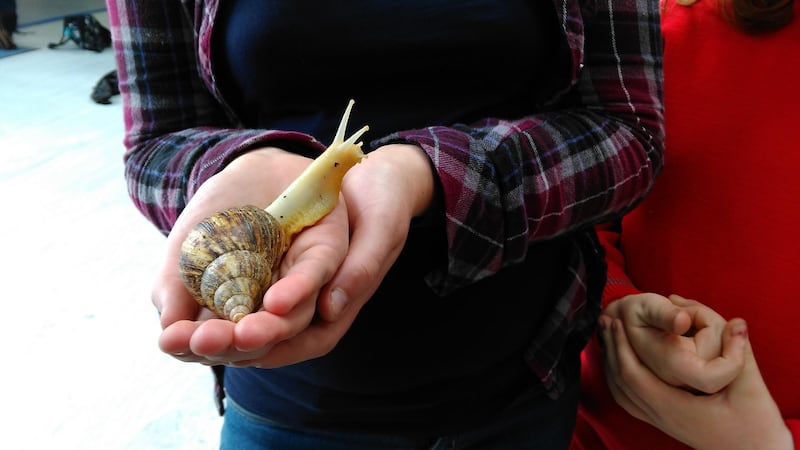
Now, the DSPCA teams bring giant African land snails with them on school visits. “It’s about teaching empathy – even humble snails feel hot and cold, hungry and thirsty, excited, scared and in pain,” says Bird. The snails are kept in a small pet carrier with soil and introduced to the children towards the end of the class. “We talk to the children about the entire animal kingdom from mammals – including humans – to spiders and birds. Some children love to hold the snails in the palm of their hands.”
The two Shetland ponies nibbling at the grass in the enclosed garden at St Colmcille's primary school in Ballybrack, Co Dublin look like they are in paradise on a sunny morning in May. Catherine Wynne, the home school community liaison officer, organises for the ponies to visit from their home at Festina Lente equestrian centre in Bray, Co Wicklow.
Three children from sixth class take turns spending about 20 minutes with each Shetland pony, brushing or braiding her as she eats the grass. “We are focusing on sixth-class children to prepare them for the transition to secondary school,” explains Wynne.
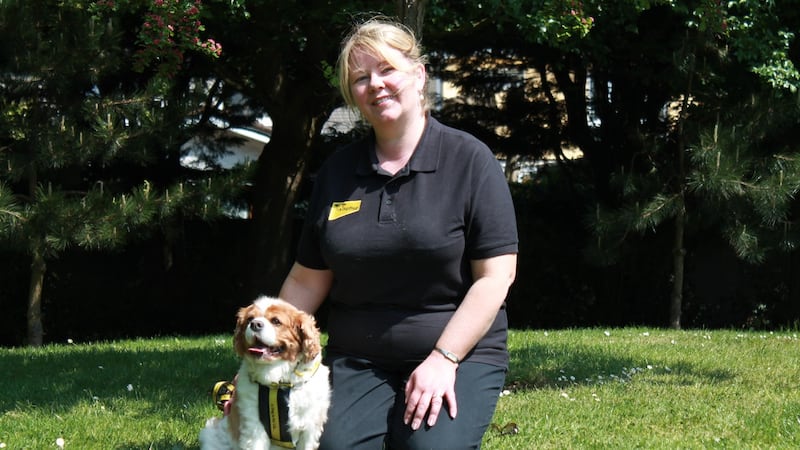
Siofra Hayes Moriarty from Festina Lente says that learning how to connect with Shetland ponies brings children back to their own feelings. "It's a form of social and emotional learning. The ponies give you minute-by-minute feedback. They won't follow the children if they are aggressive towards them. If your energy is calm, the ponies will be calm back to them. It helps the children understand themselves better."
Hayes Moriarty says that while the Shetland ponies at Festina Lente don’t get ridden, they do a lot of work. “They are great with wheelchair users and people who are nervous around animals,” she says.
Calming
Watching how the children from St Colmcille's interact with the ponies is calming in itself. Ciaran Reddin (12) says that being with the ponies calms him down. Colm Schofield (12) talks about other animals the school has embraced. "We got chickens and I had to clean up the chicken coop. We had CCTV camera to record the births of the chickens but we did see one live birth," he says. The school also adopted fish from the Sealife aquarium in Bray and the children had to record the temperature of the aquarium each day, clean the tank and feed the fish.
St Colmcille's School principal, Aidan Boyle, says this form of learning is in contrast to most school work. "Everything has to be quantified now in terms of numeracy and literary, but you can't quantify this. It's a quality experience and we use it for children with bereavement issues, those lacking in confidence and to make school more attractive for those who might be missing days at school."
Boyle says that teachers have noticed a huge improvement in the moods of the children who engage with the ponies. “These children don’t get a lot of time to themselves and they are almost in a daze when they are grooming the ponies,” he adds.
Benefits for children
Researchers have found that animals in schools can promote language, imagination and self-reflection – especially in young children. When used as mascots or pets within the classroom, guinea pigs, gerbils or even fish can also motivate children to engage more in school work. Some teachers also integrate the classroom pet into lessons about science, geography and mathematics.
Wynne says the children also benefit from the teamwork of interacting with animals. “We also bring some children from the school to Festina Lente for equine-facilitated education and assisted learning programmes and there is a huge difference in their behaviour at school and at home afterwards,” says Wynne.
“These programmes benefit all children but they are especially good for children with autism spectrum disorder [ASD] or attention deficit hyperactivity disorder [ADHD]. They are so calm after doing the classes,” she adds.
Betty O’Connor is a secondary school teacher who teaches teenagers in the adolescent unit of St John of God’s Hospital, Stillorgan, Co Dublin. The Shetland ponies from Festina Lente visited as part of the teenagers’ social, personal and health education (SPHE) programme. “We prepared for their visit by learning about how to care for horses and their sleeping, eating and drinking habits and then the young people were able to groom and stroke them and bring them around the grounds of the hospital,” says O’Connor. The programme was held for two hours per week over eight weeks. “I think it was good for their self-esteem and those who had access to horses in the past were able to share their knowledge with the other students.”
The American animal behaviour specialist, Temple Grandin, also visited Ireland in May. Renowned for her books – including Animals Make Us Human – and her work with children with autism, Grandin says it is a big loss that so many city children now have very little or no contact with animals.
“Dogs in particular are really important for companionship and for some children, dogs can teach them empathy,” she says. She believes the idea of having pets in schools is a good one. “Some psychologists now have dogs in their offices to help children talk about their problems,” she adds.




















